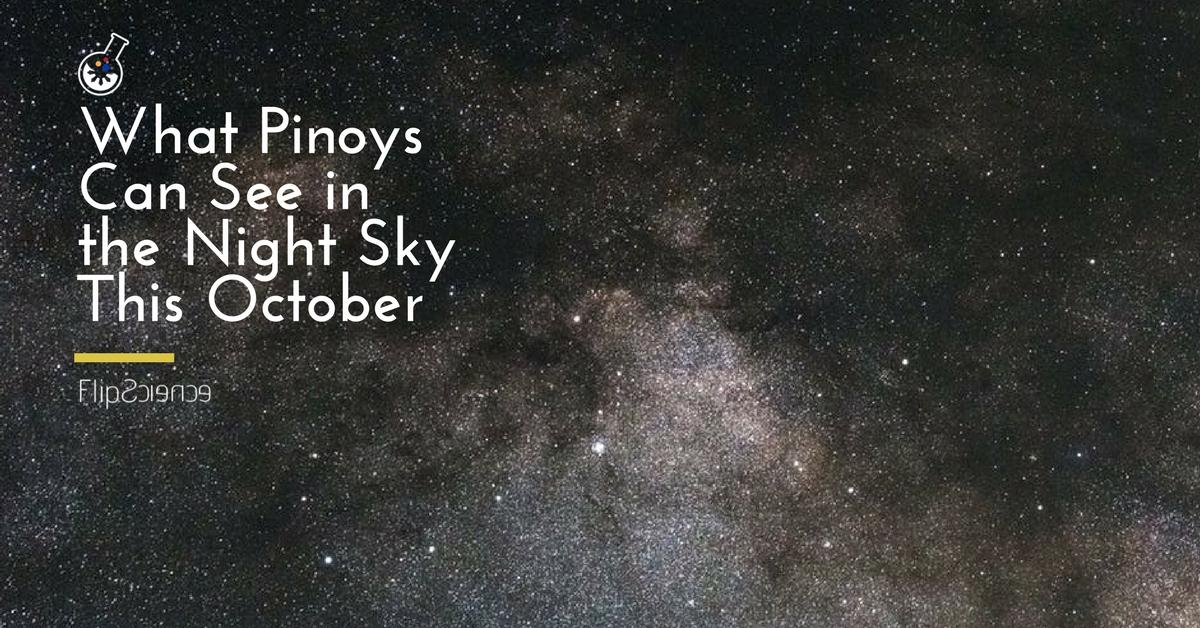A parade of planets and a spectacular meteor shower will grace the night sky this October, ushering in the last quarter of the year with an exciting series of celestial treats—unless the weather finds itself up to its old rain spell tricks, that is.
According to the astronomical diary of the Philippine Atmospheric, Geophysical, and Astronomical Services Administration (PAGASA), the Orionid meteor shower will be visible starting next week, from October 17 to 25. But the best part of annual meteor event would be seen on October 21 to 22, when the Orionids reach their peak of 15 meteors per hour.
And the best part about it this year? There’s no moon.
In an email interview with FlipScience, Engr. Camilo Dacanay, chairman of the board of the Philippine Astronomical Society, said:
“The moon is at waning to waxing gibbous [during this period], meaning [there is] almost no light pollution from the moon to wash out the Orionid meteor shower.”
The Philippine Astronomical Society is the first astronomical organization in the country. Founded in 1971, it aims to promote astronomy through free lectures, public viewings, and astrocamps.
Source: Rogelio Bernal Andreo, October 2010
The meteor shower got its name from the constellation Orion or the Hunter. This is because the meteors seem to fly out from its direction.
In reality, though, the Earth is actually passing through the remnants that the famous Comet Halley left in its wake.
Imagine a piece of chalk scraped against a blackboard, with the Earth as the board and Halley’s debris as the chalk. The event creates magnificently bright streaks in the night sky as seen on Earth, commonly referred to as “falling stars.”
To get the most out of the meteor shower viewing, find an open field away from the city lights, preferably a dim place. Furthermore, allow your eyes to adjust to the darkness before proceeding with the meteor hunt.
A campout with family and friends is highly encouraged, as the meteors are best viewed from late evening until dawn.
“For those who wish to watch this celestial event, try to join any astronomy organization who shall be conducting observation,” said Dacanay. “It will be more exciting and perfect if this meteor shower could be discussed among observers and participants and its connection to our solar system formation.”
The Philippine Astronomical Society will organize a meteor shower viewing at the Manila Observatory on October 21, from 6:00 P.M. until dawn.
Halley’s borne legacy
It was in 1705 when English astronomer Edmond Halley discovered his eponymous comet. One of the darkest (least reflective) objects in the solar system, it reflects only three percent of light that falls on it.
In the course of his studies, Halley noticed a pattern from the previous documentations of comets. A particular ball of ice seemed to reappear every 75-76 years. He turned out to be right, as he correctly predicted the return of the comet in 1758.
Source: Halley Multicolor Camera Team, Giotto Project, ESA
To honor Halley in his contribution, the comet got its name from him.
Until its next visit in 2061, Comet Halley will be manifesting its existence on Earth through the yearly Eta Aquarids in May and the Orionids.
October planet parade
Neither binoculars nor telescopes would be of much help in watching the Orionids. However, these instruments are definitely useful in observing relatively stationary celestial objects, such as other planets.
According to PAGASA, there will also be a parade of planets in the night sky throughout the month. Venus will be up before dawn, while Mars and Saturn are expected to appear closer to the Moon in the sky mid-October.
The National Aeronautics and Space Administration (NASA) also confirmed that Uranus will be visible from Earth this month. On October 19, the planet will reach opposition (when the planet and the Sun end up being positioned on opposite sides of the Earth). Stargazers will see it throughout the night, its distinctive blue-green color making it visible to the naked eye. –MF

Author: Cez Verzosa
Cez Verzosa is a former news producer at a local television network and a product of the University of Santo Tomas journalism school in España, Manila. She is currently in the United Arab Emirates, busy looking for camels.








